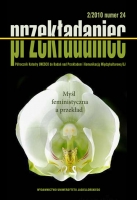Kobieta tłumaczka w średniowieczu (kilka przykładów translatorskiej aktywności kobiet)
The Woman Translator in the Middle Ages. Selected Examples of Female Translation Activity
Author(s): Jerzy StrzelczykSubject(s): Language and Literature Studies
Published by: Wydawnictwo Uniwersytetu Jagiellońskiego
Keywords: women translators in the Middle Ages; vernacular languages; paraphrases; hagiography; chivalric poems; treatise Secretum Secretorum; fables; Fürstenspiegel; Marie de France; Clemence of Barking; Hildegard von Hürnheim; Elisabeth von Nassau-Saarbrücken,
Summary/Abstract: Translatory achievements of medieval women are rarely discussed. In antiquity Greek and Roman writings were practically all composed in two languages. Because Latin women’s writing did not reach sophistication, or at least we do not possess the evidence for it, Greek dominated. In the early Middle Ages the situation changed: Latin became dominant, and the writing in Greek was no longer well recognized. While the literary examination used to focus on high culture, the value of such high-brow products was assessed according to the criterion of originality. Low culture and its writings were largely disregarded. Translation, a low-brow representative, could not easily prove its originality. Comments about it are rather infrequent in early compendia of medieval literature. This absence may be partly explained by the fact that originality itself was not held in high regard in the Middle Ages. Only recently has the growing research into social and legal conditions of early women as well as into their varied cultural and literary expressions brought them a deserved recognition.
Journal: Przekładaniec.
- Issue Year: 2011
- Issue No: 24
- Page Range: 21-33
- Page Count: 13
- Language: Polish

